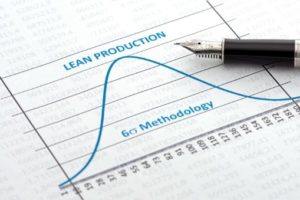The main objective of lean manufacturing is to reduce the time it takes from when a customer places his order to the time the order is delivered. By removing wasteful activities along the value chain, there is a significant reduction in lead times and — ultimately — costs. 3D printing is proving to be a useful tool in eliminating some process steps and improving overall product quality.
3D Printing for Rapid Prototyping
The time it takes to get to market from idea can determine the success of a product. It is for this reason that product design and testing should take the least amount of time. 3D printing provides a quick way to iterate through designs before settling on a workable solution.
Rapid prototyping using 3D printing reduces product development timelines. Costs also come down because the materials used are a cheap alternative to the one that will be used for the final product.
Machine Part Replacement using 3D Printing
Replacing machine parts can cost a lot in terms of lost productive time due to downtime. Imagine a machine stopping dead in the middle of a production run and the replacement spare part will not be ready for weeks. The customer may be forced to look elsewhere, and if they can not find an alternative, will be very disappointed.
Another scenario is having very expensive spare parts that would be too costly to keep in stock. 3D printing is a good alternative as parts can be printed only when needed. For a machine with hundreds of critical parts, it is practically impossible to keep a spares for each one of them.
By using 3D printing for parts replacement, you can improve the bottom line through cost savings which you can pass to the customer. Also, your customer satisfaction will be high as they will not suffer any stockouts. It is also possible that your product quality will remain high as the machines will be in top condition.
3D Printing Complex Designs for Production
If you are producing highly engineered products, their complexity means they will be expensive to produce. Complex designs also require complex tooling — which is also difficult to produce. In addition to that, the production process of these design tends to be also complex.
Using digital product and process design for highly engineered products, you will be able to save a significant amount of time, effort and money. This is because you can test various configurations and opt for the one that works best and is easy to manufacture. This is before you even make an actual physical part.
After deciding on the best design, you can 3D print it and see how it looks physically. You will also have a feel of the tooling required to manufacture it.
Factory Layout Testing using 3D Printed Models
If you are familiar with lean manufacturing, you will know that flow is one of the most important aspects of production. How value flows within a system determines whether a firm will meet its quality, cost and delivery objectives.
How machines and work stations are arranged contributes to overall factory productivity. But factory layout can be difficult to change around, especially when work is going on. Also, because some machines are big and complicated, moving them may require shutdowns for long periods. Such a drastic move may not even produce the results you desire.
Conclusion
3D printing allows you to make scaled down models of the factory. With these models, you can play around with different machine and cell layout configurations without causing unnecessary downtime.
From a lean thinking point of view, 3D printing — if used properly — can help in reducing the 7 Common Wastes of Production. Whether it is in reducing distance travelled, inventory, motion, overprocessing or overproduction, 3D is a useful tool that you can easily leverage to attain the goals of lean production — high customer value with the least amount of waste.


